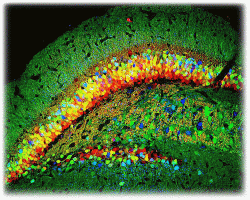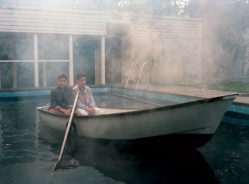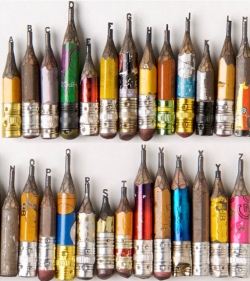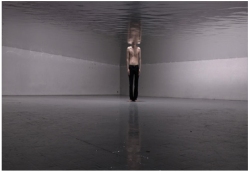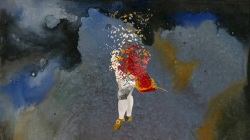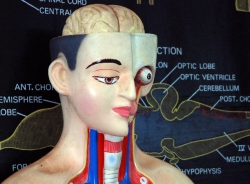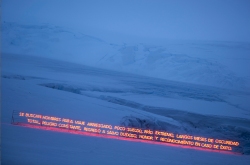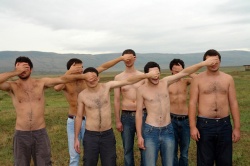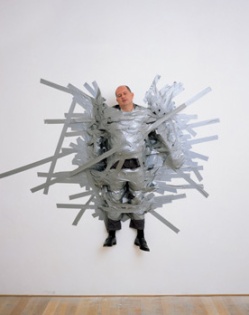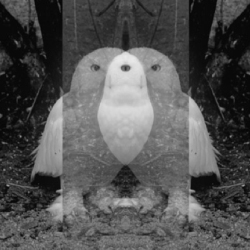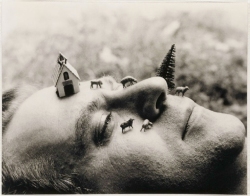Jim Duignan (Assoc. Professor, School of Education at De Paul University, Chicago, IL, Stockyard Institute http://www.stockyardinstitute.org)
Bill Genereux (Assoc. Professor and PhD. Candidate in Education,Kansas Sate University, Salina, KS, TechIntersect http://billgx.edublogs.org/)
Program Notes:
Jim Duignan PowerPoint presentation
Jim Duignan: Associated Materials
Addams, J. (1893) The Subjective Necessity for Social Settlements
Mark K. Smith Settlements and Social Action Centres
Temporary Services: Art Work
Jazmen McKinnor: Peace Warrior
Allison Peters Quinn (pressed but not published): Exchange Rate
Links / References to talk & Audiences
Groups and Spaces http://groupsandspaces.net/browse
Groups and Spaces is an online platform that gathers together information on people making art in groups and collaborative situations, groups that run art spaces, and independently run artist spaces and centres. The site serves as an opensource portal for artists, educators and citizens to learn more about these working methods and connect with resources in their area. The platform aims to facilitate dialogue about community engagement, collaborative practices and provide educational resources for new audiences.
Stockyard Institute http://www.stockyardinstitute.org The Stockyard Institute is a pedagogical collective and artist project. We design temporary projects and sustainable programs with the arts that consider people in their many capacities as community producers. We use educating and the public space as mediums to explore ways to develop reasonable prototypes for thinking about the kind of city we want to thrive in.
Co Prosperity Sphere http://coprosperity.org/ The Co-Prosperity Sphere (C-PS) is an experimental cultural center located in Bridgeport, The Community of the Future. The Sphere is a public platform for art and ideas and is an advocate for emerging art in all its forms. We produce exhibitions, socially engaged projects, critical publications and community initiatives. The C-PS hosts exhibitions, screenings, presentations, installations, festivals, meetings, classes and performance programs in its 5,000+ square foot complex. From our space we build independent cultural infrastructures to maintain a healthy art ecology for Chicago and our region.

The Co-Prosperity Sphere (C-PS) is an experimental cultural center located in Bridgeport, The Community of the Future.
Experimental Station http://www.experimentalstation.org/ The Experimental Station is a not-for-profit (501-c-3) incubator of innovative cultural, educational, and environmental projects and small-scale enterprises. The Experimental Station was founded in 2002 by Connie Spreen and Dan Peterman upon a long history of socially, artistically, and environmentally significant projects that had operated quietly but successfully at its location at 6100 S. Blackstone Avenue. In the 1990s, the address, owned and managed by artist Dan Peterman, steadily developed a reputation among local, national and international cultural networks for its vitality, innovation and social relevance. A devastating fire in April 2001 halted activities. The hiatus opened up, however, the exciting opportunity to realize our vision of creating a more sustainable organization, while continuing to foster the types and quality of projects for which the building at 6100 S. Blackstone had become known. That organization is the Experimental Station.
Mess Hall http://messhall.org/ Mess Hall is an experimental cultural center in the heart of Rogers Park, Chicago. It’s a place where visual art, radical politics, creative urban planning, applied ecological design & other things intersect & inform each other

Mess Hall is an experimental cultural center in the heart of Rogers Park, Chicago. It's a place where visual art, radical politics, creative urban planning, applied ecological design & other things intersect & inform each other
Artiscycle http://artiscycle.net/
Learning Site http://www.learningsite.info/ The Learning Site focuses on the local conditions in which its art practice is located. This entails a critical examination of the material resources and economies available within specific situations. Each situation may entail examination of economic and environmental factors, but also labor rights, property rights and the production and distribution of knowledge, which are investigated in tandem to produce a variety of different critical perspectives.
Lavie Raven / University of Hip Hop http://uhiphop.uchicago.edu/raven.htm Lavie Raven is a social studies and language arts instructor at North Lawndale College Prep (a Chicago public high school), and the Minister of Education for the University of Hip-Hop. Having taught in the school system for ten years and done community arts work for seventeen years, Raven has created strategies for applying hip-hop as community service and classroom education. He has worked with youth on many community hip-hop arts programs and social justice projects, for groups such as Habitat for Humanity, Pogranizce (Borderlands Project), the Southwest Youth Collaborative, the Chicago Park District, the University of Chicago, the Chicago Public Schools, the Stockyard Institute and numerous other organizations. As one of the founders of the University of Hip-Hop, a multi-disciplinary school of the street arts, Raven helped to create a dozen charter branches that serve youth across the city of Chicago and throughout the nation.
The Teachable File http://teachablefile.org/ the TEACHABLE FILE is a working catalog of alternative art schools and a pre-pedagogical reference on experimental education. The file is forming itself through communicative action and engaged research. It is what it is; it will be what it will be.
Bill Genereux
Bill Genereux full presentation
The information I want to share begins with the historical context of the Kansas one-room country schoolhouse. When that style of schooling was prevalent, families and communities were actively engaged in school. You might think that the one-room schools went out in the 1800’s with Laura Ingalls, but not around here. The last country schools closed in the mid 1960’s so this part of American education is still within living memory. I have some really interesting video clips of teachers & students from these schools, which I hope will help to illustrate how much education has changed from those days.
From the rural schools, I will proceed to a discussion of reconnecting schools to community, primarily through examples of three amazing educators I’ve met only online: Paul Bogush, Jonathan Dale, and Linda Yollis. These three exemplify what is possible when using technology to reconnect families and communities to what is going on in schools.
Once upon a time, schools and their operation were primarily a local affair deeply intertwined with the communities that they served. We now have schools operating with policies created far from home and federal dollars which ensure the policies will be implemented without regard to whether they are best for a given community. The connection between school and community is far less distinct than it once was. In the current climate, teachers are aware that change needs to occur, but often feel powerless to implement any meaningful change. For one quick illustration, as a parent, when I ask my kids’ teachers “Why don’t we teach any art?” (I ask this question regularly) invariably the answer is “the state assessments” and “we don’t have time for it.”
I believe that even in this restrictive climate, with all of the pressures that go with “leaving no child behind” it is still possible for imaginative educators to incorporate a well-rounded, interdisciplinary approach to teaching the required subjects. My example of art can be, and is with regularity, integrated with other subjects such as social studies or the sciences. However, one of the big problems that teachers face is a lack of time to invent these imaginative strategies of integration. This is where technology can help. Teachers need not start from scratch with these innovations when they can borrow from other teachers who have already freely shared their ideas with the world through the Internet. What teachers need is first to know that great ideas are already out there, and second, support and encouragement from their school leadership to give it a try; knowing that improvement is worth the extra effort.
My hope is that all teachers would engage in some sort of reflective/revision process to improve their teaching. The most powerful current example I can think of in this regard is in the phenomenon of edublogging or the writing of educational weblogs (blogs). A blogging teacher is typically a reflective teacher, focused on continual improvement. A blogging teacher, especially one who has moved beyond the initial stages of blogging, is also supporting other teachers by providing feedback and encouragement.
In many instances, teachers who blog are on the digital frontier in their institution, without much local support. For blogging to make a meaningful difference at the school level, administrative and parental support is paramount. It can mean the difference between having a strong cohort of blogging faculty and isolated “lone wolf” teachers who will blog with or without local encouragement. When done correctly, online communications such as the classroom blog can become that vital missing link between school and community. Hopefully through these new communications media, ongoing discussions can happen about how best to educate our youth.






